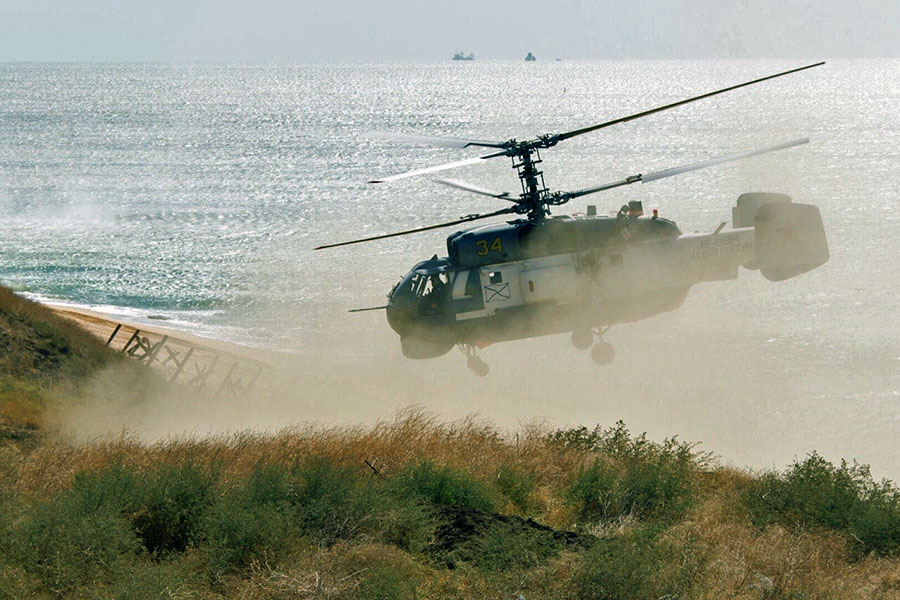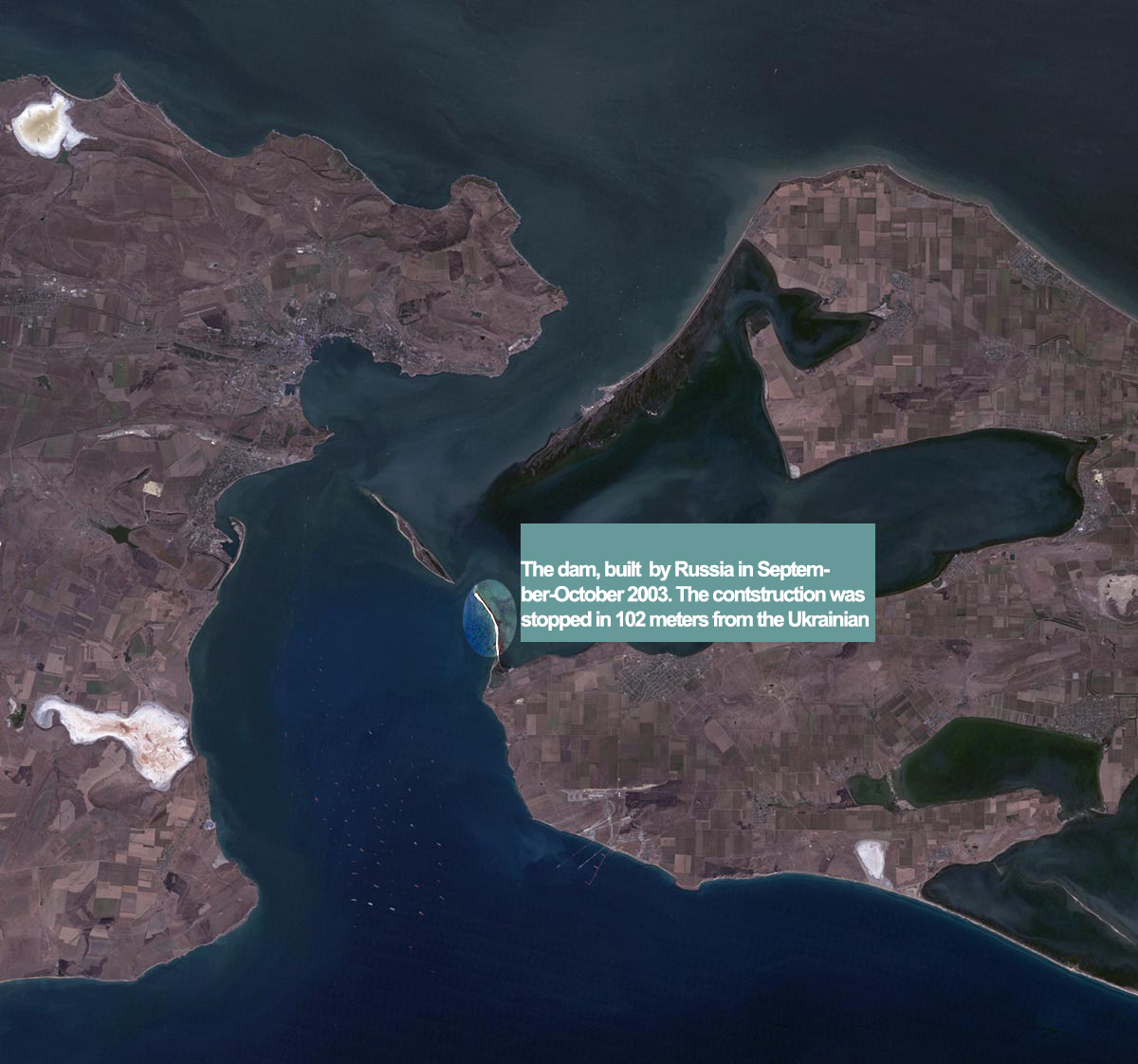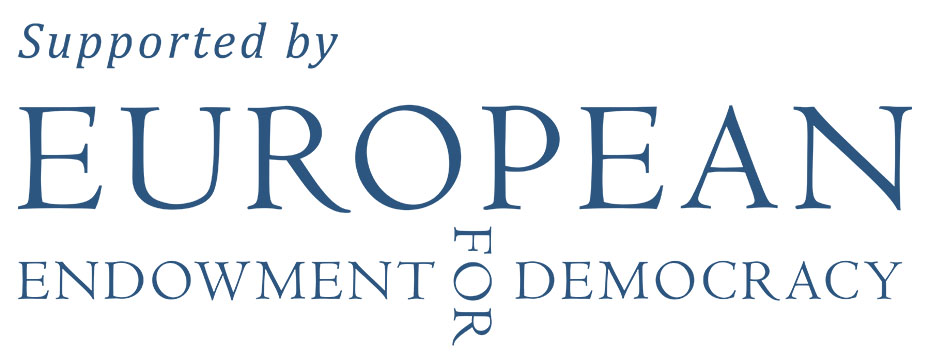Maritime Security of Ukraine. A Reference Work. (8) The Tuzla Island Conflict and the Agreement Under Duress

Bohdan USTYMENKO,
M.J., Attorney at Law
Tetiana USTYMENKO,
S.J.D., professor,
Department of Civil Law and Procedure
National Academy of Internal Affairs
From the editors of BlackSeaNews
On 7 December 2021, the interdepartmental working group chaired by Secretary of the National Security and Defence Council (NSDC) of Ukraine Oleksiy Danilov completed work on the draft Maritime Security Strategy of Ukraine, a document initiated by President of Ukraine Volodymyr Zelensky.
The strategy was developed taking into account the current experience of the world's leading maritime powers, the positions of maritime law scholars, the proposals of 16 government agencies, independent experts, and business associations. The working group members approved the draft, and the final text of the document, after coordination of some positions, was sent to the President of Ukraine and members of the NSDC of Ukraine.
The strategy took into account a lot of proposals aimed at solving problems that had been repeatedly addressed in the publications by BlackSeaNews authors. Therefore, the editorial board has decided to create a concise and clear reference work based on the contributions from our authors, which looks at the terminology and problems related to maritime security and provides expert explanations.
Contents
(1) The State Border of Ukraine at Sea
(3) The Exclusive Economic Zone and the Continental Shelf
(4) Ukraine's Maritime Borders With Turkey and Romania
(5) Ukraine's Maritime Borders With the Russian Federation
(6) "Historical Waters" of the Sea of Azov and the Kerch Strait
(7) "Internal Waters" and Borders in the Sea of Azov and the Kerch Strait
(8) The Tuzla Island Conflict and the Agreement Under Duress
(11) Foreign Military Exercises in the Exclusive Economic Zone of Ukraine
(12) The Legal Aspects of Hydrocarbon Extraction in the Exclusive Economic Zone of Ukraine
(13) The Prohibition Against Vessels and Ships Entering the 12-Mile Zone of the Crimean Peninsula
(14) Threats of Maritime Formats Involving the Russian Federation
(15) Necessary Legal Measures Ukraine Should Take
* * *
There is also a clear evidence that in 2003, Ukraine was coerced to sign the Kerch Treaty due to the threat of force by the Russian Federation. We should remember that in September 2003, the Russian side provoked a serious crisis in the Russian-Ukrainian relations by illegally constructing a bulk dam in the Kerch Strait between Russia’s Taman Peninsula and the Ukrainian island of Tuzla without Ukraine’s approval. Even then, the Russian intention was to violate the territorial and border integrity of Ukraine.
The situation was so critical that to guarantee proper control over the state border of Ukraine in the Tuzla area and the adjacent waters of the Kerch Strait, as well as the respective activity of state authorities and officials, the Ukrainian Parliament ruled to establish a Provisional Special Parliamentary Commission for Ensuring Control over the State Border Regime in the Tusla Island Area.
And as has been long-known, to avoid an armed conflict, bloodshed and deaths of thousands of Ukrainians, Ukraine’s President Kuchma was forced to sign the infamous treaty with V. Putin — dubious both legally and factually as it may be — ratified later by the Verkhovna Rada of Ukraine.

However, despite the effort, the Kerch Treaty managed to delay the «hot» stage of the conflict between Ukraine and Russia only for a decade.
Since February 2014, the Russian Federation has occupied the Crimean Peninsula and the adjacent Ukrainian waters — a total area of roughly 100, 000 square kilometers.
In the light of the Tuzla incident and the conclusion of the Kerch Treaty that followed, one should turn to Article 52 of the 1969 Vienna Convention on the Law of Treaties that stipulates that any treaty concluded due to a threat or use of force, thus, violating the principles of international law embodied in the Charter of the United Nations, is regarded null and void.
Therefore, both the provisions of Article 52 of the Vienna Convention on the Law of Treaties and the actual circumstances of the Kerch Treaty conclusion clearly demonstrate that the Treaty is not legally binding.
To be continued...
References:
- Treaty Between the Russian Federation and Ukraine on Cooperation in the Use of the Sea of Azov and the Kerch Strait from December 24, 2003, https://zakon.rada.gov.ua/laws/show/643_205.
- The decree of the Presidum of the USSR Supreme Soviet transferring the Crimea Oblast from the Russian SFSR to the Ukrainian SSR, April 26, 1954, https://archives.gov.ua/Sections/Crimea_50/photos_03.php?3.
- Declaration of State Sovereignty of the Russian SFSR: Declaration by the First Congress of People's Deputies of the Russian SFSR from June 12, 1990.
- Act of Declaration of Independence of Ukraine from August 24, 1991, https://zakon.rada.gov.ua/laws/show/1427-12.
- Agreement Establishing the Commonwealth of Independent States (Rus/Ukr) from December 8, 1991 (ratified on December 10, 1991), https://zakon.rada.gov.ua/laws/show/997_077 .
- United Nations Convention on the Law of the Sea (ratified by the Law of Ukraine On Ratification of the 1982 United Nations Convention on the Law of the Sea and the Agreement #728-XIV on the Implementation of Part XI of the 1982 United Nations Convention on the Law of the Sea" from June 3,1999), https://zakon.rada.gov.ua/laws/show/995_057.
- On Establishing the Provisional Special Parliamentary Commission for Ensuring Control over the State Border Regime in the Tusla Island Area, https://zakon.rada.gov.ua/laws/show/1235-15.
- On Ratification of the Treaty Between Ukraine and the Russian Federation on Cooperation in the use of the Sea of Azov and the Kerch Strait: a law of Ukraine from April 20, 2004.
- Vienna Convention on the Law of Treaties from May 23, 1969, https://zakon.rada.gov.ua/laws/show/995_118.
* * *
 This publication has been produced with the support of the European Endowment for Democracy (EED). Its contents do not necessarily reflect the official opinion of EED. Responsibility for the information and views expressed in this publication lies entirely with the authors.
This publication has been produced with the support of the European Endowment for Democracy (EED). Its contents do not necessarily reflect the official opinion of EED. Responsibility for the information and views expressed in this publication lies entirely with the authors.
More on the topic
- 19.12.2021 Maritime Security of Ukraine. A Reference Work. (15) Necessary Legal Measures Ukraine Should Take
- 19.12.2021 Maritime Security of Ukraine. A Reference Work. (14) Threats of Maritime Formats Involving the Russian Federation
- 19.12.2021 Maritime Security of Ukraine. A Reference Work. (13) The Prohibition Against Vessels and Ships Entering the 12-Mile Zone of the Crimean Peninsula
- 19.12.2021 Maritime Security of Ukraine. A Reference Work. (12) The Legal Aspects of Hydrocarbon Extraction in the Exclusive Economic Zone of Ukraine
- 18.12.2021 Maritime Security of Ukraine. A Reference Work. (11) Foreign Military Exercises in the Exclusive Economic Zone of Ukraine
- 17.12.2021 Maritime Security of Ukraine. A Reference Work. (10) What Mandatory Procedure for the Delimitation of the Maritime Border Between Ukraine and Russia Can Be Adopted
- 16.12.2021 Maritime Security of Ukraine. A Reference Work. (9) The Delimitation of the Sea of Azov and the Kerch Strait According to the UN Convention on the Law of the Sea
- 14.12.2021 Maritime Security of Ukraine. A Reference Work. (7) "Internal Waters" and Borders in the Sea of Azov and the Kerch Strait
- 13.12.2021 Maritime Security of Ukraine. A Reference Work. (6) "Historical Waters" of the Sea of Azov and the Kerch Strait
- 12.12.2021 Maritime Security of Ukraine. A Reference Work. (5) Ukraine's Maritime Borders With the Russian Federation
- 11.12.2021 Maritime Security of Ukraine. A Reference Work. (4) Ukraine's Maritime Borders With Turkey and Romania
- 10.12.2021 Maritime Security of Ukraine. A Reference Work. (3) The Exclusive Economic Zone and the Continental Shelf